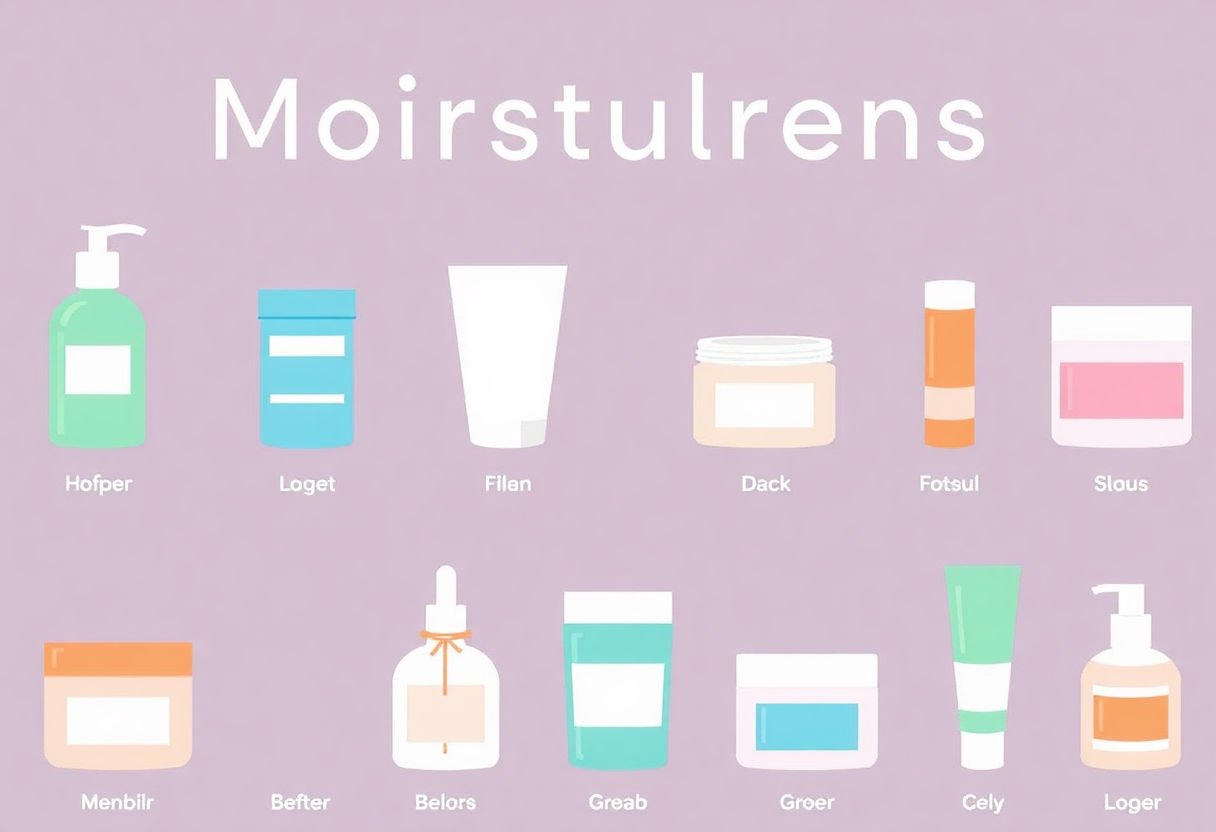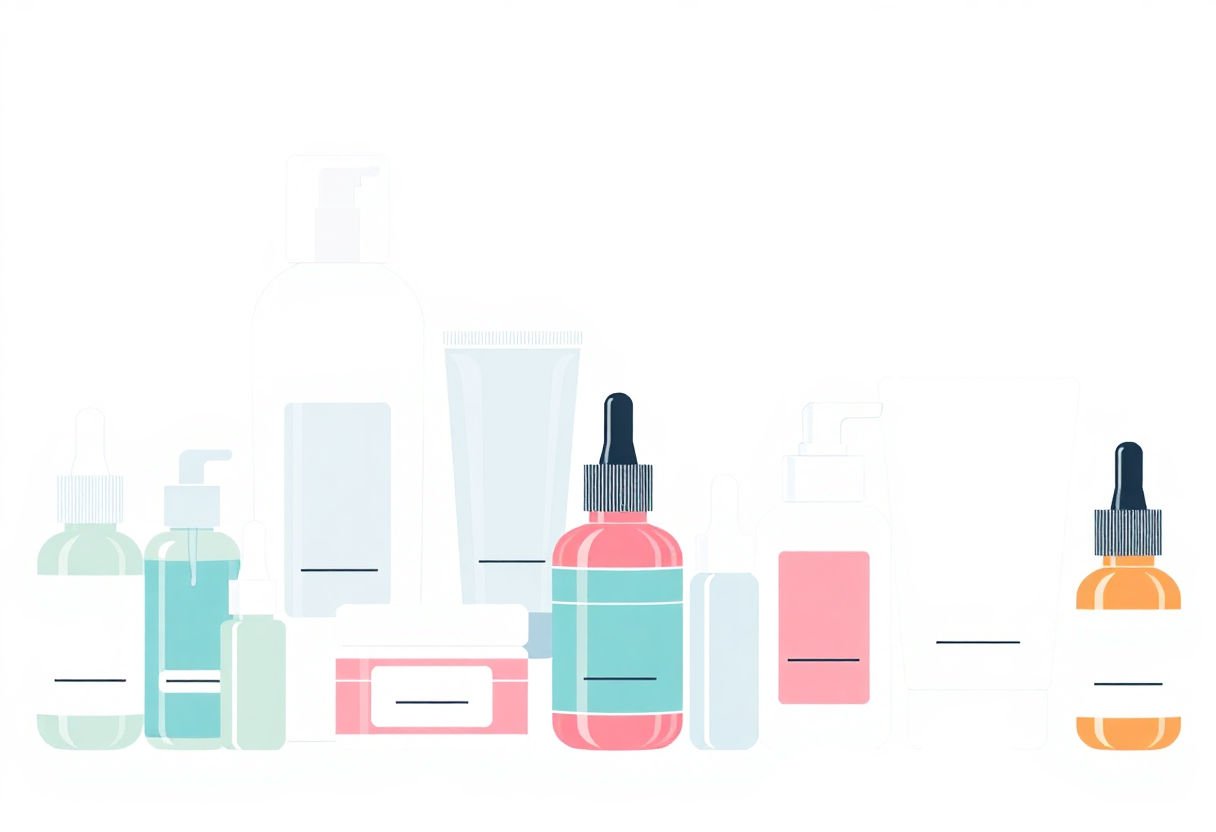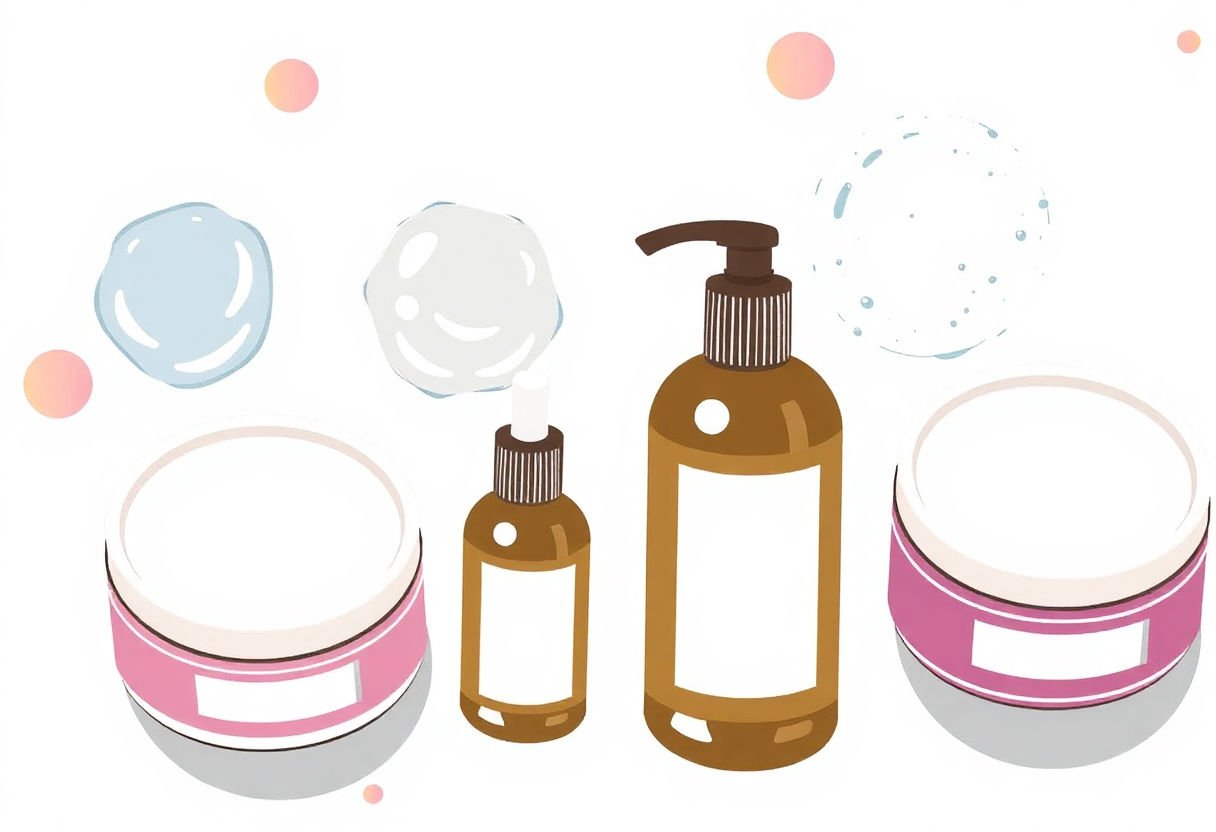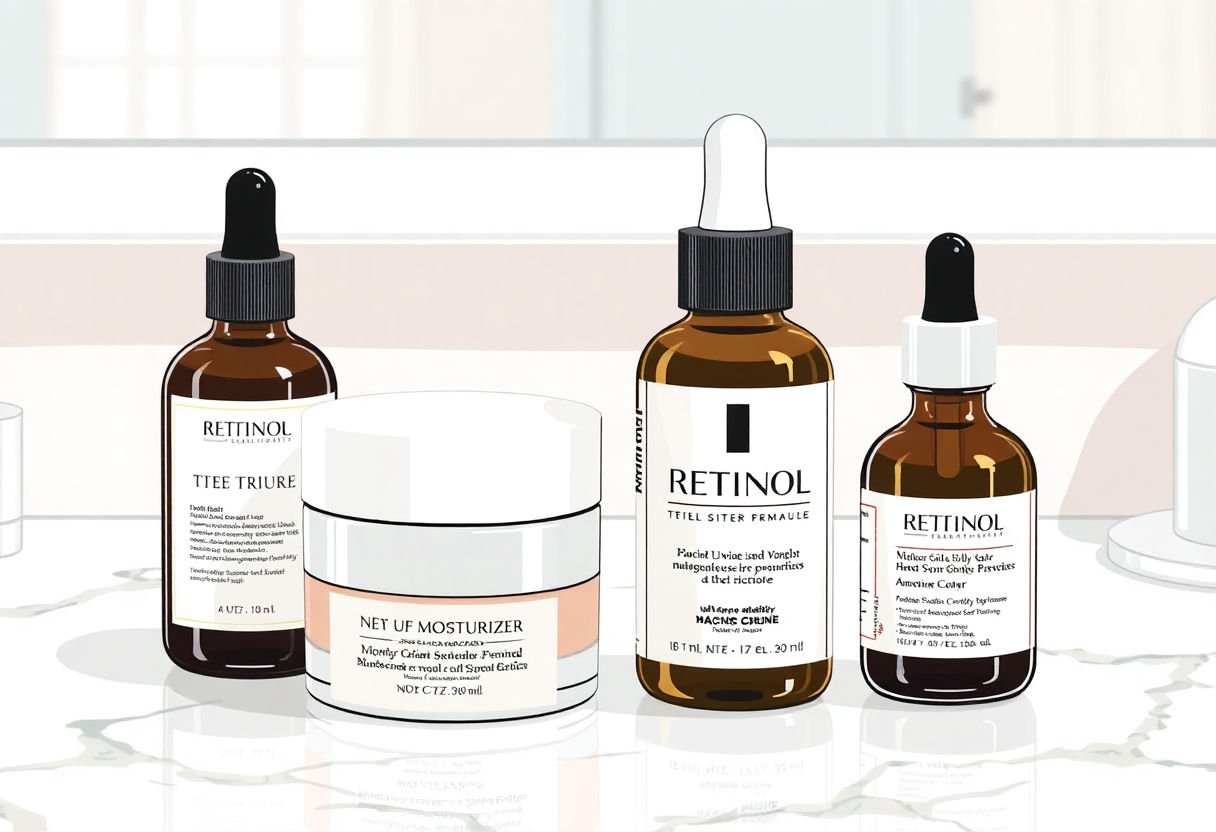In the pursuit of flawless skin, understanding the synergy between moisturizer and retinol is crucial. This article delves into the essentials of integrating these two powerhouse ingredients into your skincare routine. Gain insights into their individual benefits, how they complement each other, and best practices for their application. With detailed step-by-step guidance, tips for adapting your regimen to seasonal changes, and advice on selecting the right products for your skin type, you’ll be well-equipped to enhance your skincare routine effectively. Explore these transformative ingredients and unlock the path to achieving radiant, healthy skin.
Key Takeaways
- Integrating moisturizer and retinol into your skincare routine can significantly enhance skin texture and appearance.
- Moisturizers are essential for maintaining skin hydration, creating a barrier to prevent moisture loss, and complementing the effects of retinol.
- Retinol is a powerful ingredient known for promoting skin renewal and reducing the appearance of fine lines and wrinkles.
- Applying retinol correctly with proper moisturizing techniques can maximize benefits and minimize irritation.
- Adapting your skincare routine with seasonal changes ensures optimal skin health and balance year-round.
The Role of Moisturizer in Skincare

Moisturizers play a crucial role in any skincare routine, serving as the cornerstone for maintaining hydrated and healthy skin. At their core, moisturizers work by trapping moisture in the skin, creating a protective barrier that helps prevent moisture loss. This is essential as well-hydrated skin appears more radiant, plump, and resilient, reducing the signs of aging such as fine lines and wrinkles.
There are various types of moisturizers, each tailored to suit different skin types and conditions. These include:
- Humectants such as glycerin and hyaluronic acid, which attract water to the skin.
- Emollients like ceramides and fatty acids, which smooth and soften by filling the gaps between dead skin cells.
- Occlusives like petrolatum and lanolin, which form a barrier on the skin to lock in moisture.
Beyond basic hydration, moisturizers offer a range of benefits including improving skin texture and tone, enhancing elasticity, and providing a smoother base for makeup application. Additionally, many formulations are enriched with antioxidants, vitamins, and anti-inflammatory agents such as aloe vera, which can help to protect and repair the skin from environmental stressors.
Choosing the right type of moisturizer is fundamental, as it must align with individual skin needs—be it oily, dry, sensitive, or combination skin. A well-formulated moisturizer not only enhances the overall health of the skin but also boosts the effectiveness of other skincare treatments, such as retinol, by ensuring the skin remains calm and well-nourished.
Understanding Retinol: A Skincare Game-Changer

Retinol, a derivative of vitamin A, has transformed the skincare industry with its powerful capabilities. Renowned for its anti-aging properties, retinol facilitates skin cell turnover, which can lead to a smoother, more even complexion. By accelerating the shedding of dead skin cells, it helps reduce fine lines, wrinkles, and pigmentation.
One of retinol’s most significant benefits is its ability to stimulate collagen production. Collagen is vital for maintaining skin’s elasticity and firmness, thus reducing the appearance of aging signs. Moreover, retinol can also help minimize the size of pores and control acne by preventing pore clogging and reducing sebum production.
However, incorporating retinol requires some caution due to its potency. Users might experience dryness, redness, or flaking, particularly when first introduced into a skincare routine. To mitigate these effects, it is advisable to start with a low concentration, applying retinol products once or twice a week, gradually increasing frequency as the skin adapts.
Integrating retinol with a moisturizer is crucial in alleviating potential irritation. Moisturizers help restore and maintain skin’s hydration barrier, ensuring nourishment and protection are not compromised. Additionally, applying retinol at night is recommended, as it can make the skin more sensitive to sunlight.
Retinol remains a game-changer owing to its comprehensive benefits for aging and blemish-prone skin. With careful usage, it can contribute significantly to achieving and maintaining flawless skin.
How Moisturizer and Retinol Work Together
Combining moisturizer and retinol in your skincare routine can significantly enhance the benefits of each product, creating a powerful synergy for healthier skin. Retinol, a derivative of Vitamin A, is renowned for its ability to promote cell turnover and combat various signs of aging, including fine lines and hyperpigmentation. However, its potency can sometimes lead to dryness or irritation, especially if used inappropriately.
This is where a moisturizer plays a crucial role. By incorporating a high-quality moisturizer, you create a protective barrier that helps to soothe the skin and mitigate any potential irritation caused by retinol. The primary function of a moisturizer in this dynamic duo is to replenish lost moisture, ensuring the skin remains hydrated and more resilient to external stressors.
-
Enhancing Absorption: When applied before or after retinol, a moisturizer can enhance the skin’s ability to absorb active ingredients, thus boosting the efficacy of the retinol.
-
Reducing Irritation: Moisturizers with ingredients like hyaluronic acid and ceramides are particularly effective in reducing potential irritation from retinol by maintaining the skin’s moisture level.
-
Improving Texture: As retinol accelerates cell turnover, moisturizers contribute by smoothing the skin’s texture, ensuring new skin remains supple and soft.
For optimal results, consider applying retinol on clean, dry skin, followed by a layer of moisturizer. This method—often referred to as the “sandwich” technique—helps minimize dryness while maximizing the anti-aging benefits both products offer. By understanding how these two products complement each other, you can cultivate a more refined and balanced skincare regimen.
Step-by-Step Guide for Using Moisturizer and Retinol
To achieve the optimal results when using moisturizer and retinol, it’s important to follow a meticulously crafted routine that maximizes their benefits while minimizing potential irritation.
1. Cleanse Your Skin Thoroughly: Start with a gentle cleanser to remove dirt, oils, and makeup. This step ensures your skin can fully absorb the active ingredients in retinol and moisturizer.
2. Apply Retinol: Once your skin is dry, apply a pea-sized amount of retinol evenly across your face. It’s crucial to start with a low concentration if you’re new to retinol to allow your skin to build tolerance.
3. Wait for Absorption: Allow several minutes for the retinol to absorb fully into your skin before proceeding to the next step. This waiting period helps prevent layering issues and ensures maximum effectiveness.
4. Follow with Moisturizer: After the retinol has been absorbed, apply your moisturizer. This step is vital as it helps lock in moisture and creates a protective barrier to reduce irritation often associated with retinol use.
5. Use Sunscreen in the Morning: Due to the photosensitivity retinol can cause, it’s imperative to apply a broad-spectrum sunscreen during the day. This practice protects your skin from UV damage, enhancing the efficacy of your nighttime routine.
By adhering to these steps, you’ll cultivate a balanced skincare routine that leverages the powerhouse synergy of retinol and moisturizer to enhance your skin’s health and appearance. Regular assessment and adjustments according to your skin’s response and seasonal changes further refine the benefits.
Common Mistakes to Avoid

When incorporating moisturizers and retinol into your skincare routine, it’s essential to avoid common pitfalls that can hinder effectiveness or cause adverse reactions. Here’s what to watch out for:
-
Over-application: Using too much retinol can lead to skin irritation. It’s advisable to start with a pea-sized amount and gradually build your tolerance. This allows your skin to adjust without overwhelming it.
-
Incorrect Layering: Applying moisturizer directly after retinol can sometimes dilute its potency. To optimize benefits, apply retinol to dry skin first, allowing it to absorb fully before following up with moisturizer. This sequence helps soothe potential irritation while maintaining retinol’s effectiveness.
-
Inconsistent Usage: Sporadic use of retinol can impede its long-term benefits. Consistency is key. Integrate it into your nightly routine, eventually working up to nightly application as your skin becomes accustomed to it.
-
Neglecting Sun Protection: Retinol increases skin sensitivity to the sun. Ensure you apply a broad-spectrum sunscreen every morning to protect your skin from UV damage. Missing this step can lead to increased risk of sunburn and photoaging.
-
Using Incompatible Products: Avoid mixing retinol with certain actives like benzoyl peroxide or AHAs/BHAs, as they can interact negatively and irritate the skin. It’s best to alternate their use to maintain skin health and efficacy.
By steering clear of these mistakes, you can fully harness the synergistic benefits of moisturizers and retinol, paving the way for truly flawless skin.
Choosing the Right Products for Your Skin Type

Selecting the appropriate moisturizer and retinol products tailored to your skin type is imperative for achieving optimal results. Each skin type has unique characteristics and requires specific formulations to maintain health and vitality.
Dry Skin
For dry skin, opt for a rich, creamy moisturizer that provides deep hydration. Ingredients like hyaluronic acid and glycerin are particularly beneficial as they draw moisture into the skin. A more emollient-based retinol product that includes nourishing oils can help minimize irritation while delivering its potent benefits.
Oily Skin
Oily skin types should seek lightweight, non-comedogenic moisturizers that won’t clog pores or add excess oil. Gel-based moisturizers with ingredients like salicylic acid can simultaneously hydrate and help control sebum. Retinol serums or lightweight lotions are preferable as they provide potent effects without a heavy feel.
Combination Skin
Balancing combination skin involves choosing a moisturizer that hydrates without overwhelming oily areas. Look for balancing products that contain niacinamide to even out skin tone and refine pores. Select a retinol formulation that is gentle yet effective, possibly including ingredients such as antioxidants to maintain the skin’s overall health.
Sensitive Skin
For sensitive skin, focus on soothing, fragrance-free moisturizers with calming agents like aloe vera or chamomile. Sensitive skin requires a lower concentration of retinol to reduce the risk of irritation. Products labeled as hypoallergenic and those with additional calming ingredients, like peptides, can further enhance skin tolerance.
Selecting the right products involves understanding your skin’s specific needs and being attentive to how it reacts, allowing you to make adjustments as necessary for flawless, radiant skin.
Adjusting Your Routine with Seasonal Changes

As the seasons change, so too should your skincare routine, particularly when using moisturizer and retinol. The climate significantly impacts how your skin behaves, and adjusting your regimen accordingly helps maintain its balance and health.
During the winter months, cold weather and indoor heating can strip the skin of its natural moisture, leading to increased dryness and sensitivity. To combat this, consider switching to a heavier moisturizer with ingredients like hyaluronic acid or ceramides. These components provide an extra layer of hydration, locking in moisture and ensuring your skin remains supple. With retinol, you may need to reduce the frequency of application to prevent irritation, as the cold often heightens skin vulnerability.
In summer, the heat and humidity may cause the skin to produce more oil, potentially leading to breakouts. Here, a lightweight, oil-free moisturizer can help keep your skin hydrated without clogging pores. It’s also crucial to maintain consistent retinol use, as it can help manage sun-induced skin concerns. However, always pair retinol with daily sunscreen application, as it can make your skin more susceptible to UV damage.
Throughout transitional seasons like spring and fall, gradually adapt your routine. Monitor your skin’s responses and adjust both moisturizer and retinol accordingly. A flexible approach, based on observation and needs, allows you to tailor your skincare for optimal results year-round. By attuning your regimen to these seasonal shifts, you harness the full benefits of both moisturizer and retinol, supporting your journey to flawless skin.
Conclusion
Incorporating moisturizer and retinol into your skincare regimen paves the way to flawless skin by enhancing texture and radiance. A balanced approach decreases irritation while maximizing benefits, showcasing their synergy. As skincare innovations continue, these insights underscore their pivotal role in future skincare advancements. By selecting the right products for your skin type and adapting your routine seasonally, you’ll achieve optimal results in your skincare journey. Always remember, patience and consistency are vital as you unlock the transformative potential of these powerhouse elements.
Frequently Asked Questions
How should I incorporate retinol into my skincare routine with a moisturizer?
Begin by applying retinol in the evening after cleansing and drying your skin. Follow with a moisturizer to help minimize potential irritation and dryness caused by retinol. Start using retinol once or twice a week, gradually increasing frequency as your skin adjusts.
Can I use a retinol product during the day?
It is generally recommended to use retinol at night due to its sensitivity to sunlight, which can degrade retinol and reduce its effectiveness. Always apply a broad-spectrum sunscreen during the day to protect your skin from UV damage.
What should I do if my skin becomes irritated when using retinol?
If you experience irritation, try using retinol less frequently or reduce the concentration of the product. Ensure that you are applying a moisturizer generously after retinol to soothe and protect the skin. If irritation persists, consider consulting a dermatologist.
Is it safe to use retinol and other active ingredients in a single skincare routine?
Retinol may be used with other active ingredients, but caution is advised. Avoid using it with exfoliating acids like alpha hydroxy acids (AHAs) initially, as this can increase irritation. Introduce new products gradually to monitor your skin’s reaction.
How long does it typically take to see results from using retinol?
Results from using retinol can vary, but most users start noticing improvements in skin texture and appearance in four to six weeks. Long-term benefits, such as the reduction of fine lines, are usually visible after three to six months of consistent use.
